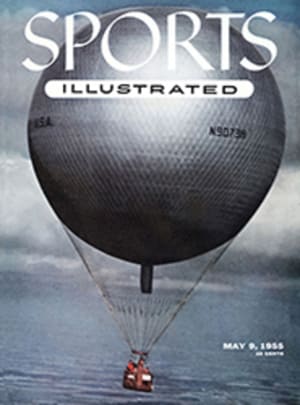
MUSCLE STRAIN
A golfing friend confessed the other day that he has always wanted to walk up to the first tee and, without taking so much as a single limbering swing, just smack the ball. Admittedly, this may be a tempting idea. However, the temptation should never be followed. For, besides the obvious hazards of topping or hitting behind the ball, any such sudden and strenuous exertion without a pre-game warm-up is an open invitation to strain a muscle.
WARMING UP
The physiological reasoning behind warming up is by gradual exercise to increase the flow of blood to the muscles and thereby raise their temperature. Like an automobile engine, muscles—to a point at least—perform smoother and better the warmer they are. At rest, your surface muscles, which are most liable to strain, register a cool 94° to 98°. Most of the blood vessels that feed energy-producing oxygen and nutrients to the billions of individual muscle fibers are shut down. Moreover, the fluid which makes up 75% of the muscle's bulk is sluggish. With the muscle in this dormant state, a quick and violent movement can rip some of the fibers or tear the tendons which anchor the muscle to the bone. If the muscle is first limbered up, blood courses to the tissue (strenuous exertion requires as much as 2,000% more blood) and its temperature is raised from one to six degrees. Thus prepared, the muscle can better handle strenuous exertion.
TIME OF EFFORT
The problem with warming up is to get all your muscles into a warm, relaxed condition without exhausting yourself. Striking such a happy medium should be easy enough, but few people set about it in the right way. First off, many confuse "warming up" and "practice." A warm-up, if you are playing golf, for example, is designed to coordinate the body sufficiently for you to hit the ball. This should take only a few minutes. Practice, on the other hand, is to enable you to drive the ball where you want it, and this may take forever. Each sport, depending on the effort involved and the condition of the player, requires a different amount of warm-up time. The strenuous exercise of pitching a baseball game may demand 15 minutes of warm-up for some pitchers; others shake hands and they're ready. A sprinter might do vigorous calisthenics for a full half hour before running a 10-second race, but a weekend athlete can limber up for golf by swinging a club and stretching his arms and legs for 5 to 10 minutes, or warm up for tennis with 10-15 minutes of lobbing.
REMEDY
Once a muscle is relaxed and warm it should be used. Otherwise it cools rapidly and can be strained as easily as if it hadn't been warmed up at all. A muscle strain, unlike muscle fatigue (SI, March 14), produces immediate pain, redness and swelling. The injured area remains sore and may turn black and blue. For first aid, apply cold water to stop internal bleeding, followed by a compression bandage. After 48 hours begin using massage and heat. One soothing remedy is to stand in a shower and let hot water spray against a towel draped over the pained muscle. But the best medicine is rest; the more rest you can give a strain, the sooner you can begin flexing your muscles again.
FIVE ILLUSTRATIONS

